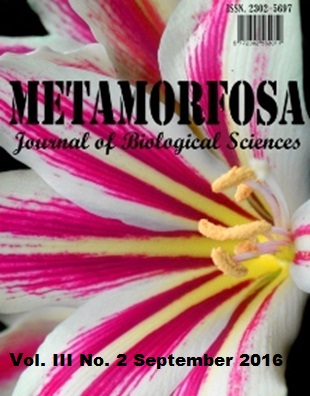KARAKTERISTIK DAN ANALISIS HUBUNGAN KEKERABATAN MALAPARI (Pongamia pinnata (L.) Pierre) SEBAGAI TANAMAN PENGHASIL MINYAK DI DUA AKSESI
Abstract
Malapari (Pongamia pinnata (L.) Pierre) is an oil-producing plant which has the potential for biodiesel feedstock. This becomes a reason that Malapari plants need to be developed and cultivated. Malapari grow naturally in lowland forests on calcareous soils, rocks on the beach, along the edge of the mangroves and along stream and river tides. This study aims to determine the characteristics of Malapari and relationship between the two accessions grown in North Bali (Pemaron, Uma Anyar, Kalisada, Pengulon, Sumber Kelampok) and East Java (Alas Purwo National Park and Baluran National Park) based on morphological characters and oil content. The research was conducted in July-November 2015. The method used in this research was observation of morphological characters as well as the analysis of the oil content of seeds. Relationship among trees that grow in the two accessions was analyzed using Minitab Vis 14. Results showed that there were differences in morphological characteristics, namely the leaves, flowers, fruits, pod and seeds dimension and oil content. Analysis of relationships among trees at similarity level above 80% classified them into 3 major groups, namely group I Malapari from Uma Anyar village with similarity level of 59,51%, group II Malapari from Pengulon village with similarity level of 80,16% and group III Malapari from Alas Purwo National Park and 32 other trees from various villages having similarity level of 84,53%.





